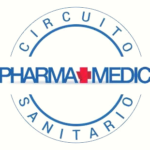Discover the importance of taking care of your nails beyond aesthetics and learn how to keep them strong, moisturized and free of infections.
Nails protect the most sensitive part of our fingers. In addition to their protective function, they help to exert more pressure when touching. They also make it easier to manipulate objects. Likewise, toenails help to maintain balance when walking.
Keeping your nails clean and well cared for, more than just a matter of aesthetics, prevents them from carrying fungi or bacteria. In this way, you will avoid them triggering diseases.
Poorly cared for nails can cause infections. Wash your hands, this protects you from germs and also protects people in your family.
On the more emotional side, they are related to the need to defend ourselves. Therefore, they can scratch, cut and tear. They can also be used as a practical tool for scratching.
According to experts: short nails are more elegant than large ones. However, colors look much better with long nails.
Practice good nail hygiene:
- Keep your nails dry and clean.
- Keeping them short prevents infections and bacteria.
- Wash your hands with warm water and mild soap.
- Use sharp manicure scissors or nail clippers.
- Apply a protective layer.
- Use a moisturizing cream.
- Keep them and your cuticles moisturized.
- You should avoid exposure to chemicals such as cleaners and solvents, which are harmful.
If you notice white spots on the surface of your nails, file them, soak them in water, dry them, and apply a medicated cream or lotion, such as terbinafine.
To safely disinfect acrylic nails, an alcohol-based hand sanitizer can be used.
Consistent manicures and pedicures help us remove dead skin cells, improve circulation, and have hydrated, soft skin.
Biotin (Vitamin B7). This is the most well-known vitamin used to promote healthy nails. By doing so, it helps strengthen them and prevent them from becoming brittle. In fact, it is found in foods such as eggs, nuts, fish, avocados, and green leafy vegetables.
Not cutting them can cause them to grow into the surrounding skin, which can cause pain, swelling, and infection.
Through the nails, clues about the state of general health can be seen by their color, shape, and texture.
For example:
Healthy nails are usually smooth and uniform in color, without spots or discolorations.
Yellow ones can reveal various diseases, such as specific mycoses and fungi. In severe cases, they also indicate conditions such as psoriasis, HIV, and kidney disease, among others.
Vertical lines: They can indicate weak nails and are also linked to nutritional and genetic problems.
Horizontal lines: They indicate healthy nail growth. They also refer to natural wear and tear over time.
Leukonychia corresponds to white streaks or spots, often due to medications or diseases.
In short, our nails are more than just beauty. They are a window to our general health and reflect our well-being. Therefore, keeping them healthy, strong and with a natural shine is the result of a good diet, proper care and healthy habits.








